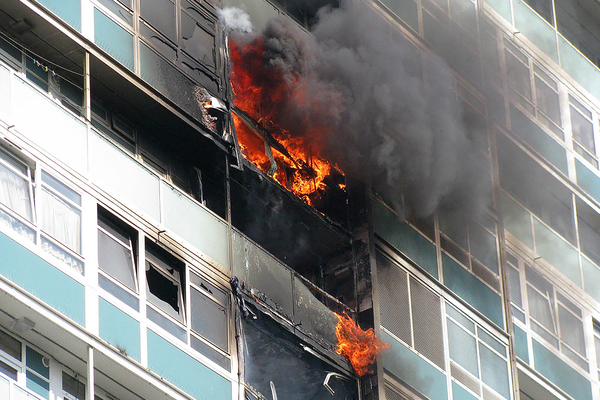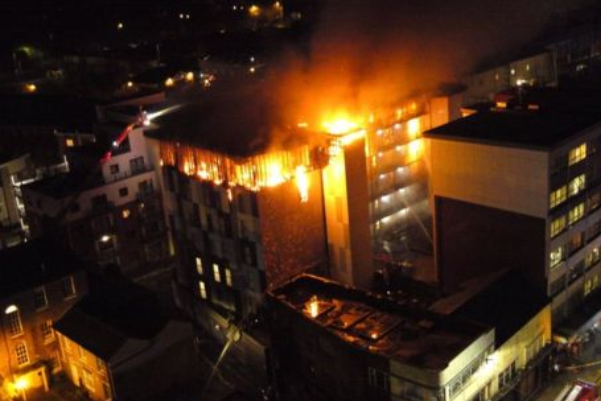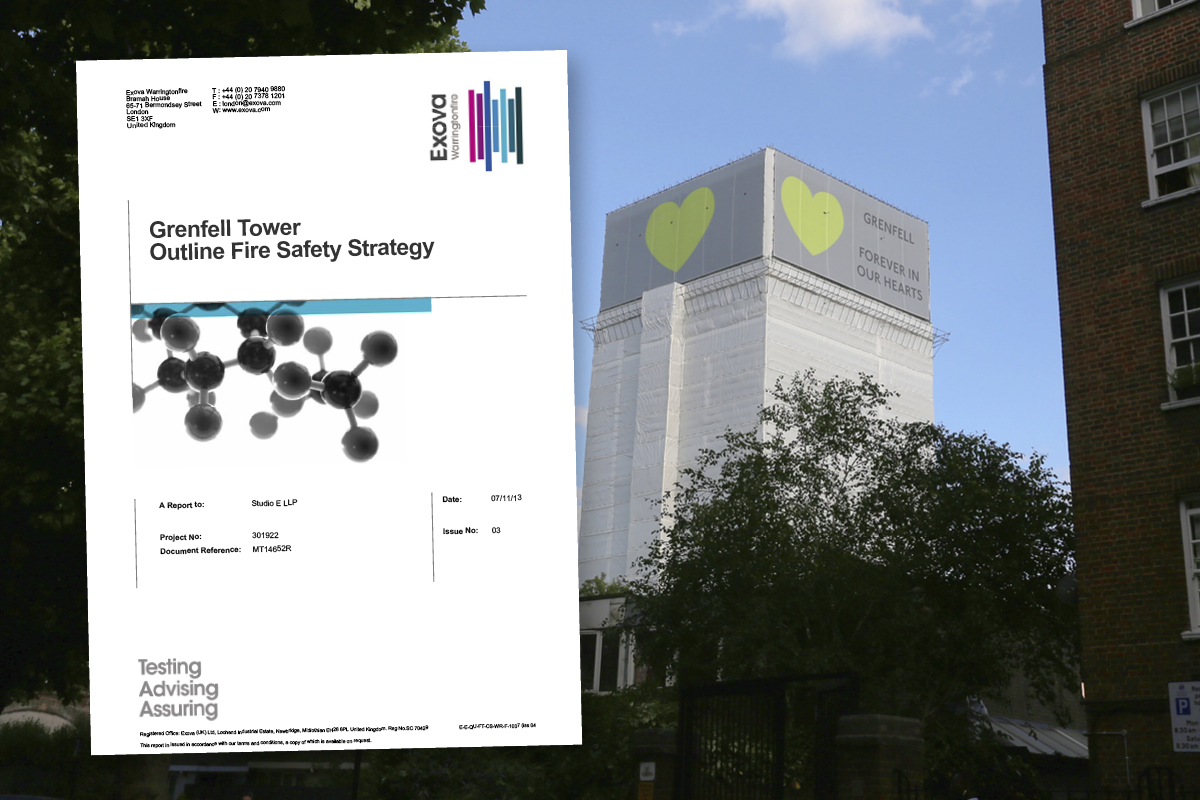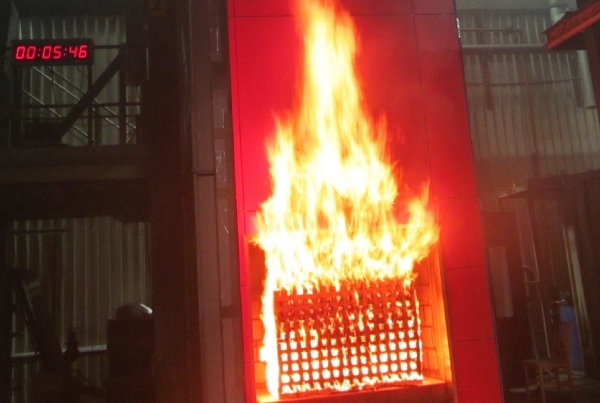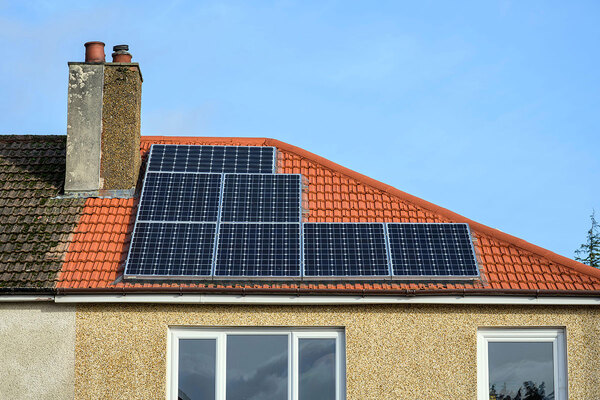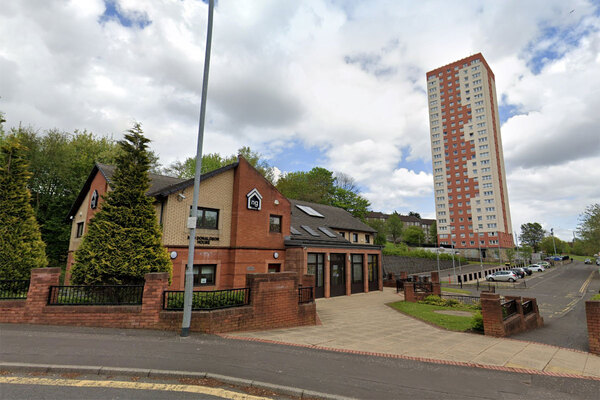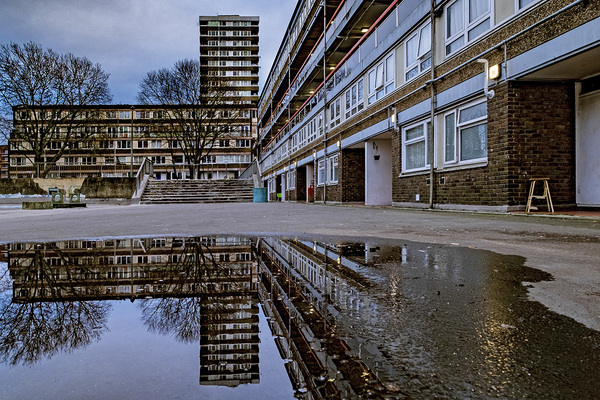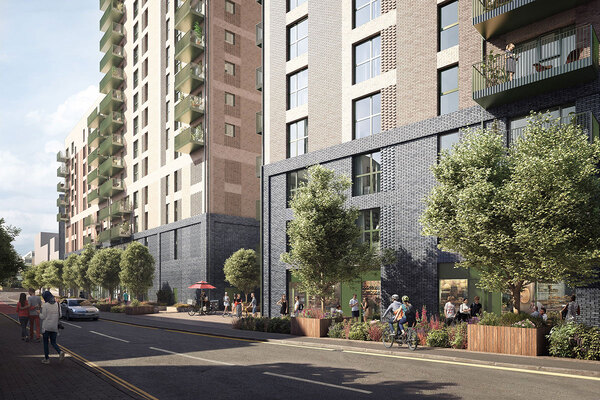You are viewing 1 of your 1 free articles
Next Grenfell-style disaster ‘will be in HPL-clad tower’, says academic
An academic has warned that the next Grenfell-style disaster will be in a building clad with ‘high-pressure laminate’ materials, after publishing a study showing that it burns 115 times hotter than non-combustible options.
Richard Hull, a professor at the University of Central Lancashire, published the first in-depth study of the combustibility of popular cladding and insulation materials in the Journal of Hazardous Materials last week.
It found that high-pressure laminate (HPL) cladding materials release heat 25 times faster and burn 115 times hotter than non-combustible products.
The government’s Building Safety Programme since Grenfell has focused exclusively on high rises clad with aluminium composite material (ACM) – the type of cladding used on Grenfell.
Professor Hull told Inside Housing: “I think that HPL has been neglected, and shouldn’t have been neglected.
“One would fear that because of all the attention that has gone to the ACM buildings, the next disaster is likely to involve HPL rather than ACM – because they haven’t had the fire risk assessments and so on.”
It is not known how many high-rise buildings are clad with HPL. One source familiar with the industry told Inside Housing that the product is “three times as popular as ACM”, but it is used more widely on low-rise buildings.
Housing minister Kit Malthouse told parliament this week that testing of non-ACM cladding systems would start “shortly”. The government has been due to begin non-ACM testing since 2017.
The government’s programme of building safety work has identified 441 ACM-clad buildings that it believes do not comply with regulations.
It currently has no estimate for the number of HPL-clad buildings.
HPL window panels were used on Lakanal House, a building in south London where six residents died in a fire in 2009.
Inside Housing revealed in July that no HPL cladding product has ever passed official safety test BS 8414, which would clear it for use on high rises.
A system using HPL cladding has failed at least one BS 8414 test, as insulation company Kingspan has revealed. The firm has posted a series of test reports online, including one from a failed test of its K15 insulation combined with Trespa’s HPL rainscreen board, conducted in 2002.
Despite this, many varieties of the product have a ‘Class 0’ rating for fire safety.
The government’s official guidance – Approved Document B – says that products with this rating can be used in the external walls of tall buildings.
Since the Grenfell fire, the government has argued that this passage did not mean that Class 0-rated ACM – including the product installed on Grenfell – complied with guidance. It has not commented on whether it believes Class 0-rated HPL complies with the guidance.
Despite the lack of action from government, some social landlords including Metropolitan Thames Valley have begun work to remove the product from high rises.
Kit Malthouse, housing minister, said: “We are not and never have been complacent about the fact that there are other cladding materials that may be of concern.
“Therefore, we have commissioned the Building Research Establishment to conduct a programme of testing of non-ACM materials, including high-pressure laminates, to assess whether any further action is necessary.”
This is a reference to the testing which has not yet begun. Advice has also been provided to building owners regarding non-ACM cladding.
Never Again campaign
In the days following the Grenfell Tower fire on 14 June 2017, Inside Housing launched the Never Again campaign to call for immediate action to implement the learning from the Lakanal House fire, and a commitment to act – without delay – on learning from the Grenfell Tower tragedy as it becomes available.
One year on, we have extended the campaign asks in the light of information that has emerged since.
Here are our updated asks:
GOVERNMENT
- Act on the recommendations from Dame Judith Hackitt’s review of building regulations to tower blocks of 18m and higher. Commit to producing a timetable for implementation by autumn 2018, setting out how recommendations that don’t require legislative change can be taken forward without delay
- Follow through on commitments to fully ban combustible materials on high-rise buildings
- Unequivocally ban desktop studies
- Review recommendations and advice given to ministers after the Lakanal House fire and implement necessary changes
- Publish details of all tower blocks with dangerous cladding, insulation and/or external panels and commit to a timeline for remedial works. Provide necessary guidance to landlords to ensure that removal work can begin on all affected private and social residential blocks by the end of 2018. Complete quarterly follow-up checks to ensure that remedial work is completed to the required standard. Checks should not cease until all work is completed.
- Stand by the prime minister’s commitment to fully fund the removal of dangerous cladding
- Fund the retrofitting of sprinkler systems in all tower blocks across the UK (except where there are specific structural reasons not to do so)
- Explore options for requiring remedial works on affected private sector residential tower blocks
LOCAL GOVERNMENT
- Take immediate action to identify privately owned residential tower blocks so that cladding and external panels can be checked
LANDLORDS
- Publish details of the combinations of insulations and cladding materials for all high rise blocks
- Commit to ensuring that removal work begins on all blocks with dangerous materials by the end of 2018 upon receipt of guidance from government
- Publish current fire risk assessments for all high rise blocks (the Information Commissioner has required councils to publish and recommended that housing associations should do the same). Work with peers to share learning from assessments and improve and clarify the risk assessment model.
- Commit to renewing assessments annually and after major repair or cladding work is carried out. Ensure assessments consider the external features of blocks. Always use an appropriate, qualified expert to conduct assessments.
- Review and update evacuation policies and ‘stay put’ advice in the light of risk assessments, and communicate clearly to residents
- Adopt Dame Judith Hackitt’s recommended approach for listening to and addressing tenants’ concerns, with immediate effect
CURRENT SIGNATORIES:
- Chartered Institute of Housing
- G15
- National Federation of ALMOs
- National Housing Federation
- Placeshapers
